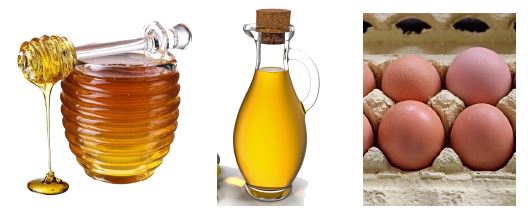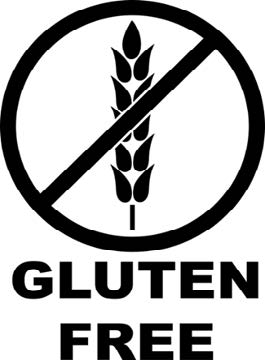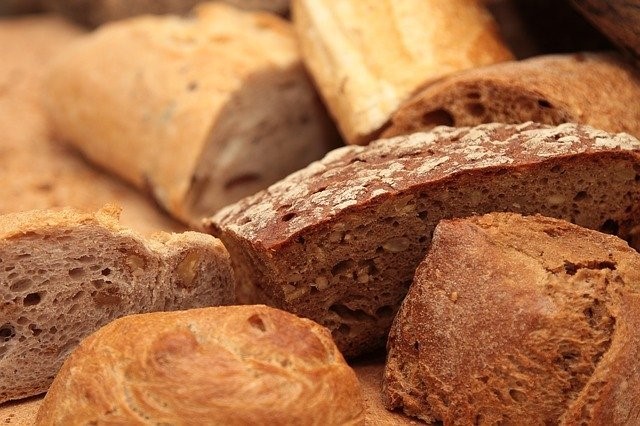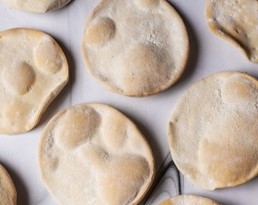Gluten Who?
By: Carla Farrand, Family and Consumer Science Agent, Garfield County
Over the last several years, I have been experimenting with baking gluten-free, as my sister-in-law has Celiac Disease and other family members have a gluten intolerance. You or your child might know a friend or relative who needs to avoid gluten.
What is Gluten?
Gluten is the name for one of the proteins that is found in wheat, barley, and rye as well as specialty wheats such as triticale and spelt. Gluten proteins such as those found in wheat flours make doughs elastic and stretchy. This elasticity also traps gas within baked goods, which provide a light airy structure.
Who should eat Gluten-Free?
There are individuals who have been medically diagnosed with Celiac Disease, gluten sensitivity or gluten intolerance that should eat gluten-free foods. It is very harmful for someone diagnosed with Celiac Disease to eat foods that are made with or contain gluten.
Individuals with a wheat allergy should also make sure as to not consume foods made with or containing wheat.
Some foods are naturally gluten free such as fresh produce, eggs, fish, meats, dairy, corn, and rice. Today more than in the past there are many types of gluten-free flours and flour blends to use for baking and cooking.
Gluten Free Flours
I have found that using a combination of gluten free flour blends is vital to the flavor, texture, and success in baking. There are four different flour mixtures that are easy to create and store in sealed containers for use. Creating your own gluten-free blends for your unique taste and purpose can be a lot of fun.
- All-purpose flour blend (general baking):
- 24 oz. Brown Rice Flour, 24 oz. White Rice Flour, 24 oz. Sweet
- Rice Flour, 20 oz. Tapioca Flour (aka Tapioca Starch) – mix well.
- High fiber blend (breads, pancakes, snack bars, cookies)
- High-protein blend (baked goods requiring elasticity such as a pie crust)
- Self-rising blend (muffins, scones, cakes and cupcakes)
When baking with gluten-free flours you typically will need a binder to help the baked product raise. Typical binders used in commercial gluten-free products are xanthan gum, guar gum or tapioca flour. Xanthan gum is typically used in yeast breads (1 tsp per cup of GF flour) and quick breads (1/2 tsp per cup of GF flour).
Other baking tips for gluten-free include:
- Add an extra egg or an additional tablespoon of oil or honey to increase moisture
- Enhance flavors using nuts, dried fruits, and spices
- Brown sugar generally works better than white
- If using leavening agents, use 2 tsp baking powder per cup of GF flour.
- Use dull or dark pans for better browning.
- Allow dough/batter to rest in the refrigerator for at least 1 hour prior to baking.
- Bake in smaller portions that are easy to eat. This allows you to freeze extra goodies to eat or share later.

Let’s Talk
Explain to children that not everyone can eat the same foods. This is because our bodies digest or process foods differently. Someone they know (friend of family) might not be able to eat regular baked goods, such as bread, muffins or cookies. Their friends’ tummy cannot digest the gluten in regular flour. Eating these foods could make them feel sick. Encourage children to help you experiment with making a gluten free flatbread to enjoy and/or share with someone who needs to avoid gluten. Understanding and accommodating others needs helps children develop empathy and kindness.
Recipe for Health:
Gluten-free Flatbread
- ½ cup of gluten-free flour, see All-purpose flour blend above or use a commercially prepared gluten free baking mix
- ¼ tsp salt
- 1 Egg
- 6 TBSP Water
Mix ingredients together. Pat out in 6” rounds on a parchment lined baking sheet. Bake in a preheated oven at 400°F for 10 to 20 minutes or until done. Try the flatbread plain to start then you can add toppings such as herbs and cheese.










